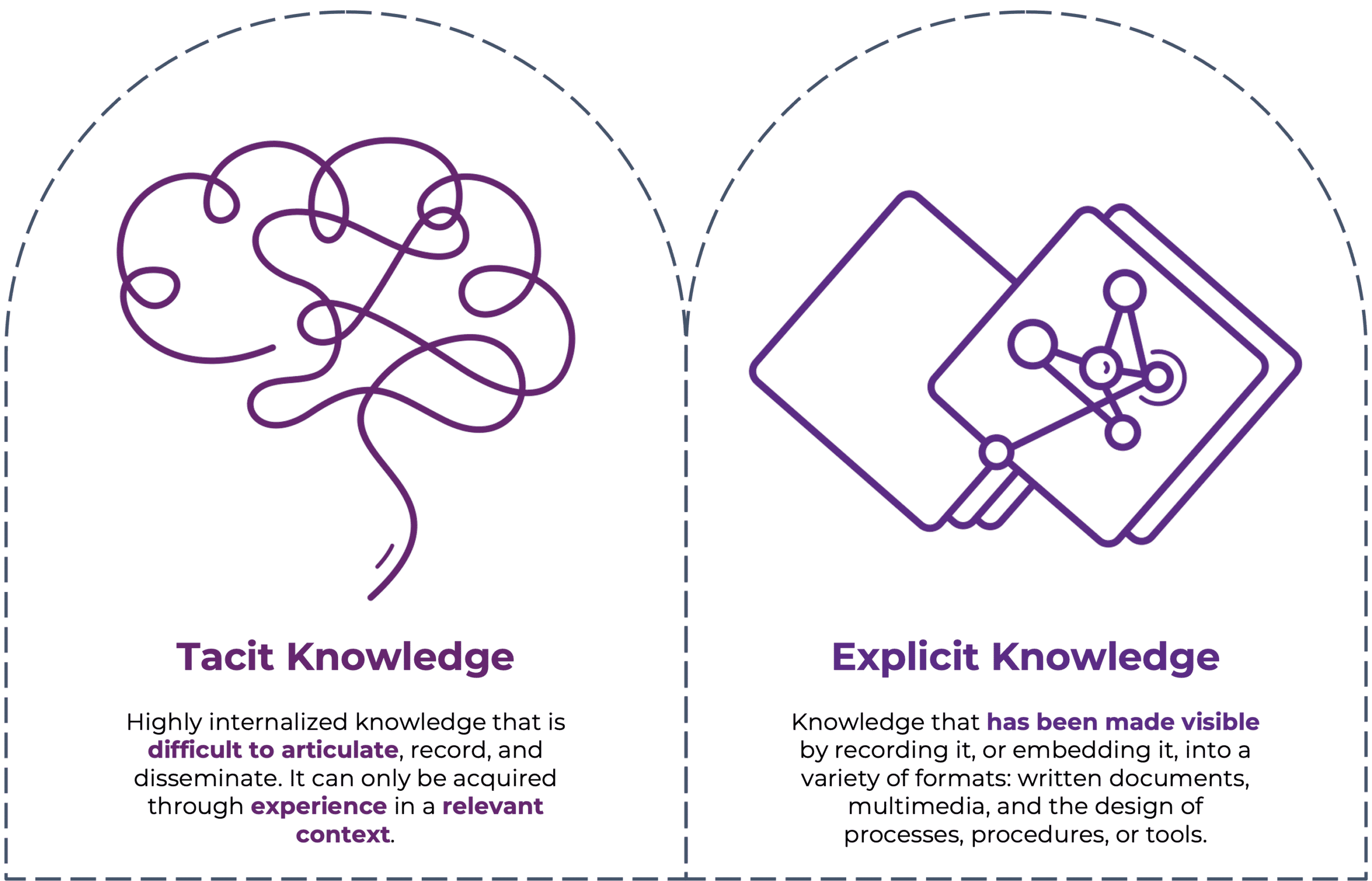Organizations are constantly generating new knowledge and enhancing existing knowledge in pursuit of their objectives. However, much critical knowledge is never captured. It remains inside people’s heads, isolated and undiscoverable. This leads organizations to suffer from a type of corporate amnesia, thus preventing employees from learning about their collective experiences, losing opportunities, spending time and resources to recreate work, rebuilding relationships, and numerous other frustrations. Clients often seek our help in defining approaches to capture their critical knowledge, and this blog series will provide best practices and guidance on how to achieve this.
The first thing we must acknowledge is that generally, organizations are trying to leverage knowledge that currently exists in two main forms: tacit and explicit. This has deep implications in how we approach knowledge and how we capture and manage it. The diagram below offers definitions for both forms of knowledge.

The challenge in capturing knowledge in each of these forms is different precisely because of their nature. Tacit knowledge generally resides within people’s heads, and it hasn’t been effectively documented. Common challenges related to tacit knowledge are the time it takes to find the experts with the right knowledge or the colleagues with the right experience. Furthermore, if the experts are unavailable, busy or on vacation, or have left the organization, their knowledge becomes inaccessible. Explicit knowledge, although documented, is often not placed in a location where it is easily discoverable, managed, or shared. Common challenges people face include spending excessive time going from repository to repository gathering the information needed to answer common requests, waiting for access, or having to spend significant effort comparing and cross-referencing multiple versions of files.
The upcoming blogs in this series discuss these challenges in detail and provide approaches and considerations for enabling organizations to capture and use their knowledge in both tacit and explicit forms. The rest of the blog series will break down approaches using EK’s People-Process-Content-Culture-Technology framework to demonstrate how to solve these challenges in a holistic manner.
If you would like to discuss your knowledge capture and management challenges in more detail, we will be happy to have a conversation. Contact us to get started.
